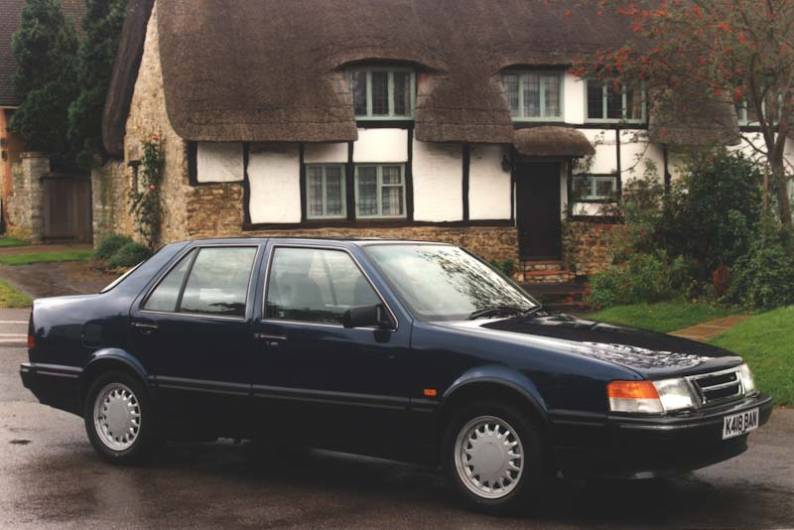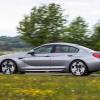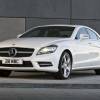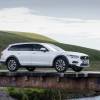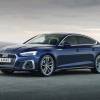
RAC sale – up to 33% off*
• Roadside cover from £5.29 a month†
• We get to most breakdowns in 60 mins or less
• Our patrols fix 4/5 breakdowns on the spot

BY JONATHAN CROUCH
Introduction
If you're looking for a large executive car that's going to last, then it's hard to ignore Saab's 9000. Previous owners will testify to its durability and long-lasting build quality. And current owners? Well, they'll also testify to the fact that 9000s are surprisingly affordable.
Models
Models Covered:First generation 1985-1991: 9000i 5dr hatchback, CD 4dr saloon - 2.0i, 2.0 Turbo, 2.3i, 2.3i Turbo [base, S, SE, Carlsson, CDi, CDi S, CDi E, CDE, CDi XS, CDi S, CD Turbo 2.3, CD Turbo 2.3 E]
Second generation 1991-1998: 9000CS 5dr hatchback, CD 4dr saloon - 2.0i, 2.3i, 2.3i turbo, 3.0 V6 [base, XS, E, Lpt S, Eco, Eco E, CDi, CDi XS, CDi E, CDi Lpt S, CDi Eco, CDi Eco E, Griffin, CDi Griffin, Carlsson, Aero]
History
The 9000 was the result of a joint venture that Saab entered into with Fiat and Lancia. However, the project could not have produced three more different cars. Fiat's Croma and Lancia's Thema bombed, while the big Saab kept going strong, for well over a decade after it was originally launched.
It made its debut in the UK in 1985 as a five-door turbocharged 2.0-litre executive hatch, with a non-turbo 2.0-litre 136bhp model following a year later. Saloon variants were next, and the whole range got US-style high-level rear brake lights in 1988.
In 1991, the range was revised, with uprated suspension and anti-lock brakes as standard. The five-door 9000 hatchback was now called the 9000 CS. The flagship Carlsson version was uprated to 220bhp with a 2.3-litre engine, while at the other end of the line-up, a popular luxury 2.0 CSE model was introduced in 1992.
Light-pressure turbo engines began to arrive in the CS and CD line-ups in 1992, first in 2.0-litre form (but later as part of the 2.3-litre engine line-up; don't confuse a 2.3-litre light pressure turbo - badged Eco or Eco E - with the full-blown 2.3-litre Turbo model).
In 1993, the Carlsson was replaced by an Aero model with a slightly different look but much the same performance formula. After General Motors took control of the Trollhattan Company, the 24-valve V6 from the Vauxhall Omega was installed in top models in 1994.
In 1997, the saloon CD models were replaced by the all-new 9-5. The five-door CS continued, however, but was itself deleted at the end of 1998, to be replaced effectively by the new 9-5 estate.
What You Get
A solid Swede that's safer than just about everything else on the road - 30% safer in fact, than comparable mainstream rivals like the Vauxhall Carlton, Renault 25 and Ford Granada. It is the safest executive model of its era you can buy, statistically tougher in an accident than say a BMW 5 Series or a Volvo 940.
Nor is that Saab's marketing talk. Sweden's leading insurance company Folksam judged the 9000 to be the country's safest car - for a third year running. It was also assessed as one of the safest cars in the United States by HLDI, the Highway Loss Data Institute.
The 9000 is surprisingly large inside and has a huge boot capacity of between 22.1 and 56.5cuft. Most cars came well equipped, with CSE models featuring air conditioning, cruise control, central locking and anti-lock brakes as well as a driver's airbag. Early cars, however, came without the ABS.
What You Pay
Please fill in the form here for an exact up-to-date information.
What to Look For
Avoid high mileage models, not least because they will probably be in need of work and parts and servicing are pricey. Insurance won't be cheap either, particularly if you opt for a turbo.
Watch for any stains that might indicate leaks around the doors and window seals. Also, look out for electrical problems and, in particular, for damaged turbo compressor units and worn front tyres on turbo versions.
Try for the better-specified E and XS models. The 2.0-litre Light pressure turbo engine is an excellent compromise between performance and economy.
Replacement Parts
(Based on a 1996 9000CS 2.0I - prices ex Vat) A clutch assembly is around £205 and a starter motor is roughly £155 (exchange only). Tyres can be as much as £70 each, while a new headlamp is about £170. A radiator with air con is about £215, a front wing about £150 and front and rear brake pads just over £35 a set.
On the Road
It's hard to find another similarly sized alternative at the price which can begin to match the all round qualities of these cars. Take the light pressure turbo `Ecopower` system fitted to more recent models. It was the first turbo in this class of car that enabled you to have the benefits of 'blown' performance without the penalties of either high price or high fuel-consumption.
All the turbo engines are pretty quick, but more important on the road are their mid range pulling abilities which enable you to ease past slow moving traffic with ease. And without necessarily having to change gear.
As the years progressed, the Swedes tried very hard to make the turbo installation almost unnoticeable. And it's true that you have to concentrate quite hard to feel the turbo cutting in as you accelerate - the engine is that smooth. In the Ecopower cars, there isn't even a boost gauge to tell you.
If you're out for even more power, the 2.3-litre turbo variants provide it in abundance. Fifth gear acceleration for example, is better than that of a Ferrari Testarossa. At the top of the range, the 3.0-litre V6 models carved out a niche for themselves in the executive ranks.
Overall
A very desirable second-hand proposition. Yes, the maintenance will be expensive, but the parts - and the car - prove to be of such quality that you don't have to attend to it as often. Swedish logic personified.

